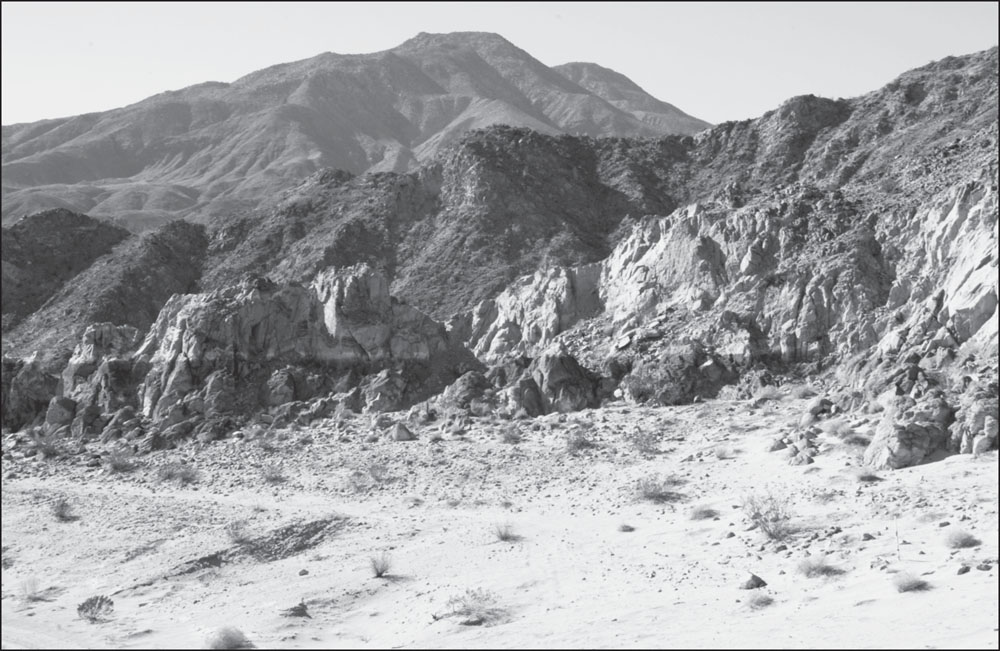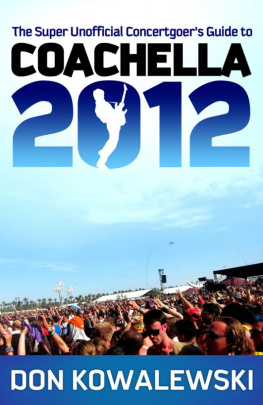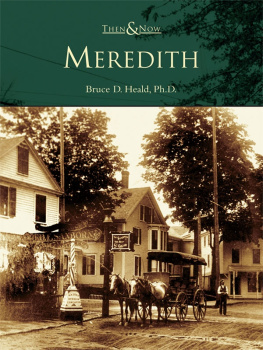
IMAGES
of America
COACHELLA

The waterline for the Ancient Cahuilla Lake can be seen in the mountains surrounding the Coachella Valley in this photograph. The light white line is evidence of the tremendous size of this ancient lake. The periodic flooding of the valley created the lake, which attracted a diverse assortment of wildlife, both aquatic and land-based, to this arid desert. (Courtesy of the Coachella Valley Water District.)
ON THE COVER: This photograph was taken in 1962 during a Coachella Valley Pioneers Society picnic at the Coachella Valley High School. The Coachella Valley Pioneers Society worked toward preserving the history of the Coachella Valley and establishing a museum. It would be the successor to the Coachella Valley Pioneers Society, the Coachella Valley Historical Society, that would establish a museum in 1984. (Courtesy of the Coachella Valley History Museum.)
IMAGES
of America
COACHELLA
Erica M. Ward

Copyright 2014 by Erica M. Ward
ISBN 978-1-4671-3266-4
Ebook ISBN 9781439649121
Published by Arcadia Publishing
Charleston, South Carolina
Library of Congress Control Number: 2014942177
For all general information, please contact Arcadia Publishing:
Telephone 843-853-2070
Fax 843-853-0044
E-mail
For customer service and orders:
Toll-Free 1-888-313-2665
Visit us on the Internet at www.arcadiapublishing.com
To the younger generations, may you be as inspired to preserve, study, and discuss the ever-evolving history of Coachella as those who have preceded you.
CONTENTS
ACKNOWLEDGMENTS
Residents of the Coachella Valley who volunteer throughout the valley to preserve the history of the city of Coachella and surrounding cities are invaluable in the preservation of historical photographs and other artifacts that relate to and tell the history of Coachella. I extend my gratitude to these volunteers for their important work benefiting the people of the Coachella Valley.
I also wish to thank my editor, Alyssa Jones, for all her assistance during this project. I specifically want to thank Robert Tyler, Kathy Bartlett, Sarah Seekatz, and the Breakfast Club for their support and guidance while researching and writing this book. To Patricia Laflin, who was a wonderful resource on the history of Coachella and a great source of support and encouragement, thank you. I also want to thank Dr. Thomas Long, who advised and encouraged my love of history early on and continued that support during this project. Finally, I want to extend a special thank-you to my husband, Victor Ward, our children, and my family. Thank you for your support and love throughout my educational journey and my continued adventures in history.
INTRODUCTION
The city of Coachella was once an arid desert occupied by the Cahuilla Indians. The Cahuilla, for centuries, had migrated between the valley floor and the surrounding mountains in reaction to the flooding of the valley by the Ancient Lake Cahuilla. By 1600, the lake had dried up, and some of the Cahuilla Indians established the Coachella Valley as their home; they are known as the Desert Cahuilla. They were accomplished well-diggers and expertly dug out walk-in wells with ramps or stairs without the assistance of modern machinery. They harvested natural vegetation and hunted local game, including rabbits and birds. The Desert Cahuillas cultural and social beliefs were a major focus of everyday life. Often, important knowledge of the people was passed through oral stories or games. The stories and games taught the people about their landscape and environment. Their cultural traditions include singing about different aspects of life. Some of the songs still sung in the 21st century are the creation songs, death or burial songs, and songs known as bird singing.
Spanish explorer Juan Bautista De Anza made the first nonNative American expedition through an area of the Coachella Valley, later called Palm Springs, in 1774. It was not until the expedition led by Capt. Jos Romero in the 1820s that more of the Desert Cahuilla come in contact with Europeans. As more surveys and expeditions passed through the Coachella Valley, so did the slow arrival of nonNative Americans. The Desert Cahuilla as a result lost the large territories they once freely lived on and became more restricted throughout the years. During the time of the Spanish and Mexican eras of governing California, the Desert Cahuilla living in the Coachella Valley were recorded on maps within a mission or rancheria, respectively. After the transfer of California to the United States from Mexico with the signing of the Treaty of Guadalupe Hidalgo in 1848, the United States began governing California, including the areas occupied by the Desert Cahuilla. The US government established the Agua Caliente Reservation in 1876, the Augustine Reservation in 1891, the Cabazon Reservation in 1876, and the Torres Martinez Reservation in 1876.
Jason L. Rector, the founder of Coachella, was the first recorded nonNative American to occupy the area. Rector would remain in Coachella and become very influential in the political development of the town until his later years, when he moved to Los Angeles. The area that was established as Woodspur in 1876 and later named Coachella in 1901 was next to the area where the Cabazon Reservation was established. The town of Coachella would grow from a desert landscape to a thriving agricultural community. The residents had access to general stores, bars, churches, and schools in the early years. As the town grew, so did the social organizations. Women formed the Coachella Valley Womens Club and actively participated in the social and economic development of the town while they maintained their households, and some also worked on the farms and ranches owned by their families.
As the agricultural industry continued to grow in the Coachella Valley, Coachella was established as a city in 1946. Due to the large Hispanic population, which by the year 2000 was more than 96 percent of the city population, Coachella was an area of social and political activism during the 1960s and 1970s regarding fieldworkers rights. Coachella was one of the areas visited by social and political activist Csar Chvez during the fieldworkers rights movement.
Coachella would again be an area of political activism in the 21st century. This time, the issue was deporting illegal immigrants. The City of Coachella declared itself a safe haven for illegal migrant immigrants in 2006. Joining other cities across the United States, Coachella declined to use local resources, such as police, to investigate and detain illegal immigrants for transfer to the US Customs and Border Patrol and eventual deportation.
In addition to the important regional and national roles Coachella has had in the social and political debates over agriculture and immigration, the city also has international recognition for the city of Indios Coachella Valley Music and Arts Festival, commonly known as the Coachella Fest or just Coachella. The Coachella Valley Music and Arts Festival started in October 1999 as a two-day concert/festival. Attendees had the opportunity to hear multiple musicians in one day, with a focus on rock music. Organizers took a year off, and in April 2001, relaunched the festival. By 2007, the event had expanded to three days. This successful music festival gained international recognition, with music fans eagerly awaiting the release of the band list each year.
Next page









